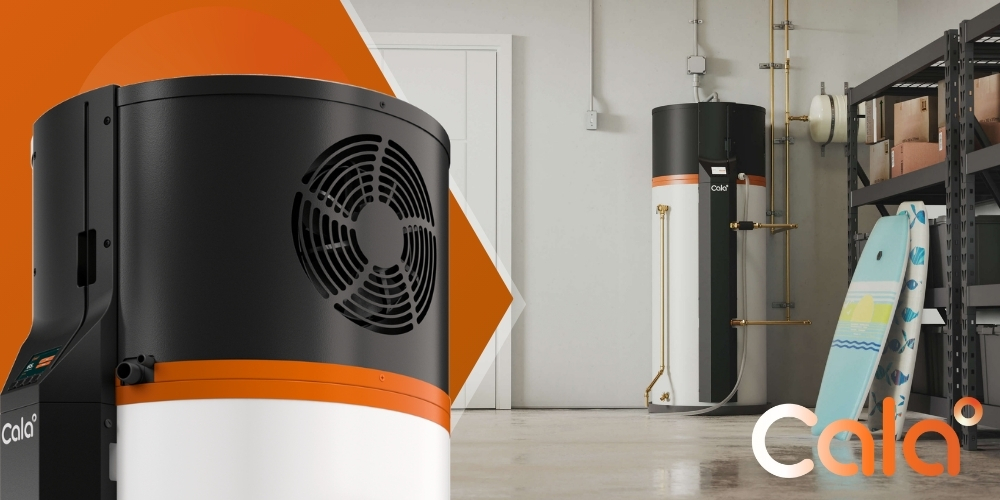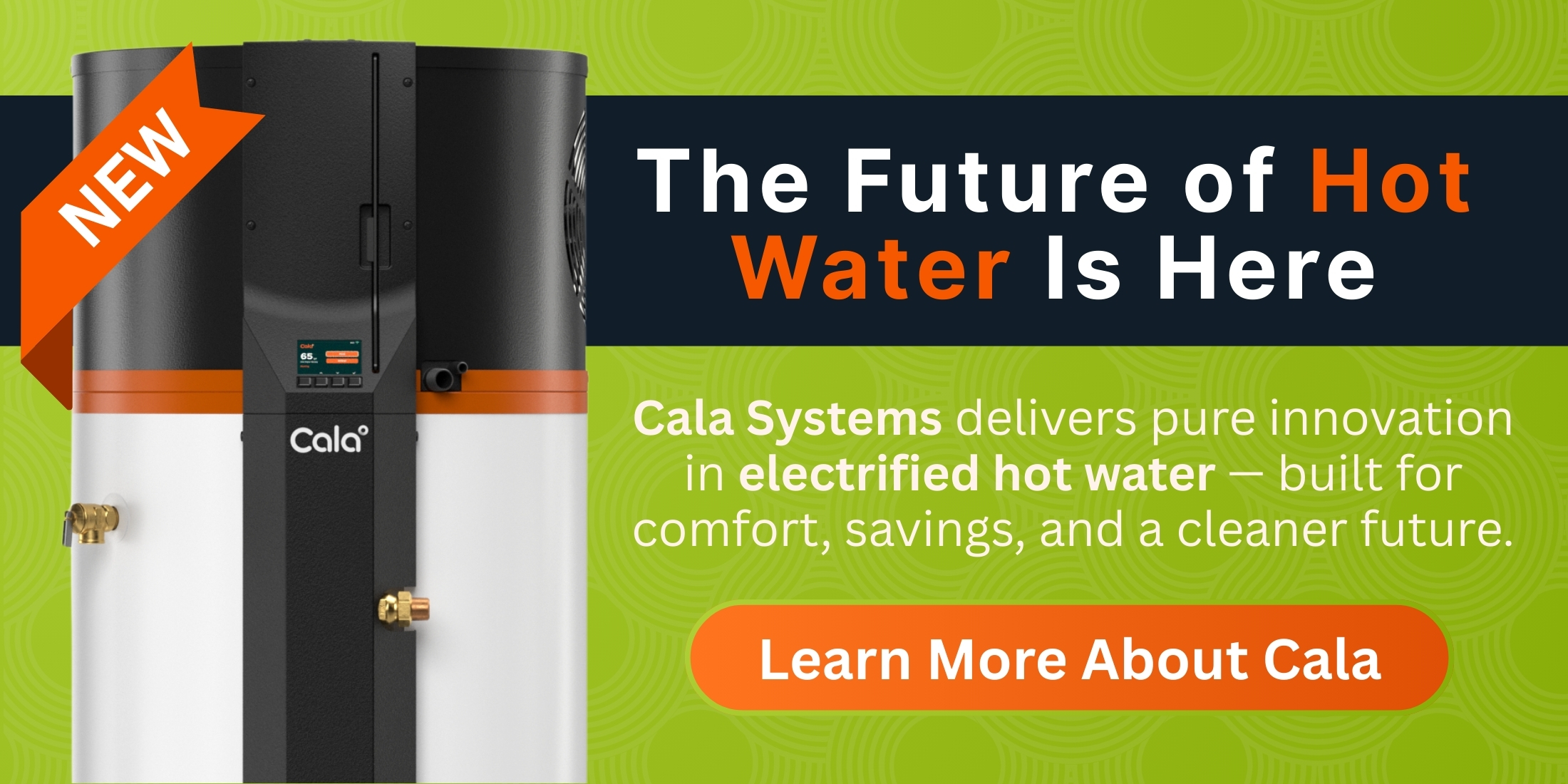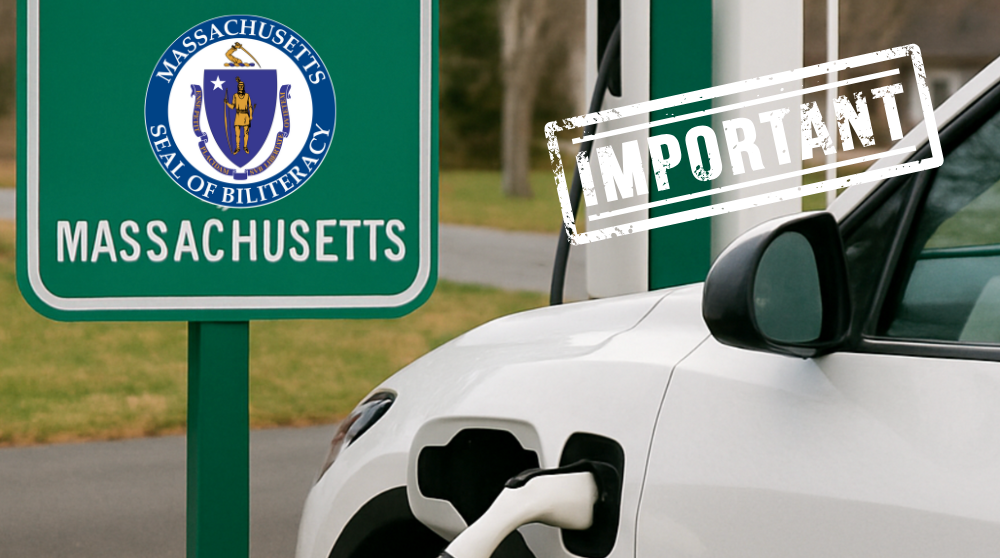Push for 20 Million Heat Pumps by 2030: What It Means for Your Home

Intelligent Heat Pump Water Heaters for Massachusetts Residential Homes — Why SumZero Selects Cala
By SumZero Energy Systems — Massachusetts’ #1 Heat Pump Installation Team
Picking a new water heater once involved a simple decision between gas and standard old electric, praying the hot water wouldn't be gone when there were two showers in a row. That's no longer the case. Now, the ideal solution for the majority of Massachusetts homes is a smart heat pump water heater (HPWH). This isn't the typical hybrid of which you might have heard, but a rather new breed of unit that adapts to your home's schedule, accommodates your energy usage, and maintains comfort consistently while consuming a lot less energy.
When homeowners want to have it exactly right the first time, our team is discerning about what products we choose. We consider the landscape and inspect the details before determining that they might work with Cala, a company that produces a high-technology hot water heater that modern homes need: intelligent, consistent, and efficient hot water — installed properly. This article describes why this alliance matters, how the tech benefits your home, what you should expect from our installation, and the handy information (rebates, credits, fit questions) homeowners inquire about daily.
Why This Alliance Is Important
(and What It Does for You)
There are two parts to a successful hot water solution:
Great technology
A system that makes you comfortable and uses less energy.
Great installation
Design, placement, airflow, electrical, condensate handling, commissioning, and long-term support.
Cala provides a tailor-built, smart HPWH platform. SumZero provides actual-world experience so that it works perfectly in real Massachusetts homes.
Together, we provide three things homeowners report wanting:
Accurate hot water at peak periods without guessing.
Cheaper monthly energy bills without compromise on comfort.
It is a future-proof solution that addresses the trend towards greener, all-electric homes.
Simply put: We get hot water. We know how to properly install heat pump technology. This combination makes a water heater upgrade a smart, long-term decision.
The Homeowner's Dilemma That We Are
If you have had a gas or a typical electric water heater, then you know the problems:
Hot-cold swings on hectic morning routines.
Higher electricity bills than hoped for.
No real insight, no real control.
A replace cycle that is experienced as "buying the same thing again."
Typical hybrid: Heat pump water heaters perform better, yet they still react: They delay until the tank cools off, then warm it up again. Homeowners averred they desire a system which thinks ahead—a unit which is a breeze to operate, handles peak load graciously, and does not make them compromise.
They fill that gap, which is why we work with them.

Why a Smart HPWH is Different
A standard electric water heater makes heat by passing an electric element, a giant toaster coil, through the tank. A heat pump water heater does it another way: it takes heat from the air it lives in and puts it into the water. Because it costs less energy to move heat than create it, heat pump water heaters run on much less power than typical electric ones. And they avoid burning gas, venting, and pollution.
A smart HPWH goes one step further:
It adapts to your home's schedule (morning showers, nighttime laundry) and preheats when demand isn't yet high.
You can use the app to check, plan, or increase hot water whenever you want.
It has a compressor that can change speed to fit what you need (not just "on/off").
It is achievable with a mixing valve holding water at the proper warmth for improved efficiency and then providing a sustained, safe warmth for usage. This is also possible with the availability of additional warm water at peak usage times.
It goes nicely with a contemporary home — primed for solar, time-of-use, and information you can view at a glance.
Result: more stable comfort, less energy use, improved control.
Why a Smart HPWH is Different
From what is visible on-site, there are three things certain for homeowners regarding the points of Cala:
1) Ease That Is Effortless
Consistent hot water at peak use is the ultimate test. Through forecasting demand and using a mixing valve, Cala maintains a steady supply. That results in less "uh oh" when two showers coincidentally happen at once or someone turns on the dishwasher.
2) Controls That You'll Ever Use
App functionality is key when done properly. You can check if there's hot water, turn up the heat for guests, view energy usage history, or simply set it and leave. As installers, we appreciate performance data — it allows us to address little issues before large ones form.
3) Future-Ready from Day One
Massachusetts is going towards clean, electricity-based homes. Cala's strategy combines well: it is scalable for solar power and accounts for time-of-use rates when needed. If you foresee solar energy at some time, or already have it, this water heater won't stop your home from being efficient.
4) A Company That Stands Behind Its Product
Cala backs every unit with a 10-year parts warranty and 3-year labor warranty — a strong sign they stand behind both the technology and the people who install it. At SumZero, we respect that kind of commitment because it mirrors our own approach: taking care of homeowners and supporting our partners with the same level of trust and accountability.
What SumZero Offers As Your Installer
(Why It Matters)
Even the best system won't work so great if installed wrong. Our task is getting your new HPWH working perfectly inside your home, not on a drawing board. This is what our approach is:
Right-size design.
We measure how much water your home needs and discuss the high-flow fixtures, filling bathtubs, and washer usage.
Best installation and ventilation.
HPWHs require air to make the heat move. We consider the room size, doors, vents, and — when necessary — ducting solutions for high performance and low noise.
Clean handling of electricity and condensate.
Safe power, tidy routing, and a trustworthy drainage plan are essential.
Commissioning correctly.
We don't just "turn it on." We verify performance, position the mixing valve, help you with the app, and verify your comfort objectives.
Rebates, credits, and financial assistance.
Mass Save, federal 25C, and the 0% HEAT Loan (if applicable) — we'll help you with that.
We take special care.
Our teams respect your home, protect your floors, and leave the place nicer than they found it.
Aftercare you can count on. Questions years down the road? We're here. The whole concept of a smart system is long-term confidence, not a one-day installation.
Costs, Incentives, and Lifetime Value
Two parts matter here: upfront cost and operating cost.
→ It is a better unit than a standard electric or simple hybrid. Tax credits and rebates make a big difference. A lot of Massachusetts homeowners rely on the 0% HEAT Loan for easier payments.
→ Month after month, the intelligent HPWH's effectiveness is where the value lies. By transferring (not creating) heat and by scheduling heating intelligently, homeowners consistently experience significant decreases in water-heating energy consumption — particularly relative to resistance electric, and many times relative to gas or delivered fuels when full costs are factors.
If you'd like figures specific to your home (household number, showering usage, energy costs), we'll do the math at your consult and provide you with a clear estimate of payback, lifetime cost saving, and the rebates for which you qualify.
Are Smarter Heat Pump Water Heaters Good for Your Home?
It is feasible for many Massachusetts homes. We will cover:
→ Household size and routines. Families with up to about 5 people usually do well with the standard setup; we will give advice for larger families or special situations.
→ Space and ventilation. We check the space, door vents, or ducts if necessary, and ventilation so the system operates properly.
→ Location. Basements are typical, as are utility rooms. As the unit functions, it removes air that feels like a dehumidifier — a typical plus for basements.
→ Electrical. We check panel capacity and proper wiring; no installation day surprises.
→ Future plans. Now or in the future for solar? Time-of-use rates? We'll put the system on so it grows with your home.
[[cta-heatpump]]
Why Is Cala Different from "Traditional Hybrids"?
✪ Control and Convenience:
Cala integrates intelligent tech with a mixing valve to remain comfortable, even when it is busy. Most standard hybrid units have simple modes and react only when the tank becomes chilled.
✪ Care and Trust:
Performance insights help you recognize problems early on and keep you on your feet for surprises. Traditional deployments are mostly "wait and see."
✪ Timing and Efficiency:
Variable driving and improved scheduling assist in energy saving with the maintenance of comfort. Ordinary hybrids operate more often and at undesirable times.
✪ Future-Ready
The design of the Cala accommodates with solar power, intelligent homes, and plans for utilizing electricity. Most older hybrids were not built for that usage.

What to Expect with SumZero
(From the First Call Through the First Shower)
✪ Talk & Pictures
We'll first glance at your objectives and take some fast photos of the current installation: the water heating unit, panel, and surrounding room.
✪ Right-Fit Design
We fit your hot water consumption and available spaces to a design which we endorse.
✪ Chaplain: A Comprehensive
Your quote is going to be transparent, includes information for installation, accessories, and a checklist for incentives. The paperwork assistance takes care of our end.
✪ Professional Installation
Licensed, insured, and detail-orientated. We dispose of the old unit, prepare the site, install and commission a new system, and leave the site tidy.
✪ App Introduction and Instructions
You'll discover how to see hot water supply, schedule increases, and view consumption — without being "technical."
✪ Support and Help
We're your long-term partner. Got a question? You call us — that's what homeowners deserve from the #1 heat pump installation company.
Common Questions We Get
(And Easy Answers)
Smart heat pump water heaters move heat from the surrounding air into the water instead of generating heat directly. This makes them up to three to four times more efficient than standard electric models. Cala’s intelligent system takes it further — it learns your household’s patterns, preheats before busy periods, and gives you app-based control to monitor or boost hot water anytime.
Most hybrid water heaters react when the tank cools. Cala predicts when your home will need hot water and heats proactively, saving more energy while maintaining comfort. It also features a variable-speed compressor, integrated mixing valve, and performance monitoring portal, giving both homeowners and installers a smarter, more reliable experience.
Savings depend on your energy source and usage, but many Massachusetts homeowners cut their water-heating costs by 50–70% when switching to a heat pump system. Cala’s intelligent controls add even greater efficiency. Add Mass Save® rebates, federal 25C tax credits, and potential 0% HEAT Loan financing, and most families see real payback within just a few years.
Yes — most Massachusetts homes are a great fit. Cala’s 65-gallon design comfortably serves households up to five people and can prepare up to 90 gallons ahead of peak use. The system needs adequate space and airflow, similar to a dehumidifier, and our team at SumZero handles every detail — from placement and ducting to electrical and performance checks.
SumZero Energy Systems is Massachusetts’ #1 heat pump installation team, trusted for precision, transparency, and high-quality service. We manage every step — design, installation, rebate paperwork, app setup, and long-term maintenance — so homeowners enjoy smarter comfort and lasting confidence. With SumZero, you’re not just buying equipment; you’re gaining a partner who stands behind it.
Why We Feel Secure Recommending This to Massachusetts Homeowners
We have a simple promise: we only install solutions that we would use in our own homes. Cala’s approach — being smart, having control, and being ready for the future — matches what we have learned from many talks with homeowners in the state. Together with SumZero’s careful installation standards and ongoing support, this water-heating upgrade makes sense right away and will last well with your home. Cleaner heat. Smarter comfort. Fewer bills.
Ready to Take the Next Step?

To learn more about Cala’s technology and vision, visit Cala Systems.
As the U.S. accelerates its fight against climate change, one of the most ambitious residential goals has emerged: installing 20 million heat pumps by 2030. Federal and state programs—especially in states like Massachusetts—are paving the way with generous rebates, 0% interest loans, and tax credits. These efforts aim to decarbonize home heating and cooling while helping homeowners make smarter energy choices.
Why Heat Pumps Are the Future of Home Comfort
Energy Efficiency That Saves Money
Unlike traditional HVAC systems that generate heat, heat pumps transfer heat—making them far more efficient. In heating mode, they pull warmth from the outdoor air (or ground) and move it indoors. In cooling mode, they do the reverse. This results in significant energy savings compared to gas furnaces or electric baseboard systems.
Aligning with Home Electrification Goals
As the national electric grid increasingly relies on clean energy sources like solar and wind, electrifying residential appliances helps drive deep decarbonization. Heat pumps are perfectly aligned with this vision—they run entirely on electricity and integrate seamlessly with renewable power.
Lower Emissions and Healthier Air
Heat pumps don’t burn fossil fuels, which means lower carbon dioxide emissions. Plus, their advanced filtration systems remove dust, allergens, and pollutants, promoting better indoor air quality and respiratory health.
Minimal Maintenance, Long-Term Reliability
Heat pumps are low-maintenance systems. With routine checks and basic upkeep, they run year-round with minimal issues. And at SumZero, we back every system with a 12-year warranty, so homeowners can enjoy peace of mind through every season.
What’s Driving the “20 Million by 2030” Goal?
The Inflation Reduction Act of 2022 made billions of dollars available for energy-efficiency upgrades—including up to $8,000 in heat pump rebates and tax credits. This funding, combined with state-level incentives, has sparked a national push toward clean HVAC solutions.
But this number—20 million—isn’t arbitrary. It’s rooted in the broader U.S. plan to reach net-zero carbon emissions by 2050. With buildings accounting for 40% of the country’s energy use, transforming heating and cooling systems is a necessary step forward.
[[cta-heatpump]]
What This Means for Homeowners
- Lower Monthly Utility Bills: Heat pumps are more efficient than gas or oil systems. Though installation costs may be higher, energy savings and rebates help offset that investment.
- Reduced Fossil Fuel Dependence: By switching to electric heating, homes become less reliant on volatile gas prices and global fuel markets.
- Eligibility for Incentives: Federal and state rebates (like Mass Save) dramatically reduce the cost of new heat pump systems.
Leading States Pushing the Heat Pump Revolution
Massachusetts
Through Mass Save, Massachusetts is offering rebates up to $15,000 per home for heat pump installations. Homeowners can also apply for 0% HEAT Loans up to $25,000, making the upgrade to clean heating more accessible than ever.
New York
New York’s Clean Heat Program incentivizes both whole-home and partial heat pump installations. The state is targeting 2 million installs by 2030, backed by rebates, technical guidance, and contractor support.
California
California’s electrification plans prioritize replacing gas appliances with clean electric alternatives. The California Energy Commission (CEC) is allocating funds to retrofit homes with high-efficiency heat pump systems to meet climate targets.
Conclusion: Why Now Is the Time to Consider a Heat Pump
Whether you're upgrading from oil, propane, or natural gas—or building a new home altogether—there has never been a better time to switch. Between the available tax credits, state rebates, and long-term savings, homeowners are in a prime position to be part of this national transition.
The heat pump revolution isn’t just about technology—it’s about comfort, cost-efficiency, and environmental responsibility. And by taking action now, homeowners can be part of a movement reshaping America’s energy future.
Ready to upgrade from gas or oil? With rebates up to $15,000 and 0% financing available, now’s the perfect time to switch to a high-efficiency heat pump. Let our experts design the best system for your home and help you claim every dollar in incentives.
Start My Heat Pump Upgrade TodayYou Might Also Like…
Continue learning with handpicked articles that inform and inspire.
Not Sure Where to Start? We’ll Guide You
Let our experts design the right heating and cooling solution—customized for your comfort, your layout, and your energy goals. No pressure. Just clarity.
Request FREE ESTIMATE







